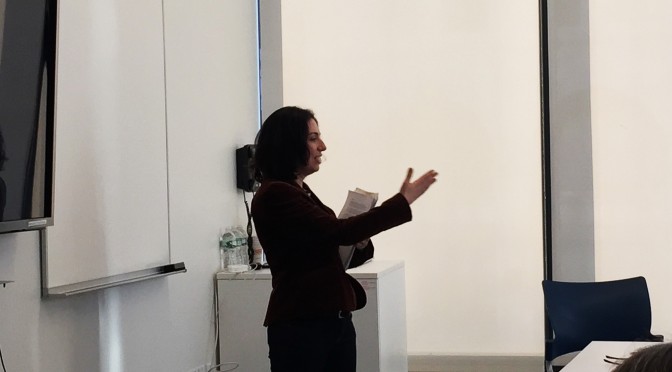Aaris Sherin, Dan Wong, Jessica Barness
- Start by taking notes based on your responses to the questions outlined below.
- It is often easiest to start with your own motivation. Why did you think this research was interesting or has a unique perspective? This is the engaging introduction and the way to hook the reader into your own thoughts and perspectives.
- Problem Statement/Hypothesis/thesis. What exactly was the thing being investigated in this particular paper, conference proceeding etc.? Why is your topic particularly important? Who will benefit from this work? What makes this work unique? For example: its historical placement, contemporary challenges being solved, unique methodology for investigation or applying existing metrics or methodologies in new ways.
- What was your approach / methodology? For example: what were you researching or investigating? What did you do and how did you do it? Was a theoretical, exploratory framework being used? Or was an established scientific method used? If you are working on an experimental or unusual type of investigation be sure to indicate this to your readers.
- What were the outcomes of your investigation, area of inquiry or of your project? What do you want the reader/viewer/participant to know about what you found out? What were the most important things the reader/view/participant should take away from the project? For example: what was the outcome of your client project, your student’s participation in the exercise or course etc.? And, what makes this valuable to other scholars/researchers?
- Conclusion. What is your conclusion after undertaking this work and what is the last thing you want your reader/viewer/participant to think about in relation to the project or area of investigation? Your conclusion might be a summation of the outcome (either positive or negative), an indication that further investigation or more in depth work is needed in the area by you or other researchers.
- Once you have made notes on the points above organize your thoughts into a linear outline using bullet points.
- Craft a more formal narrative using complete sentences and paragraphs. In the first paragraph, capture reader attention and introduce the topic. In the middle paragraph(s), provide context for the project, including relevant theory, literature, methods, etc., including the value of the project. The final paragraph should contain the conclusion.
- Make sure to include a title, keywords, your thesis statement, approach/methodologies, outcomes, and a strong conclusion. In some cases it may be appropriate or necessary to refer to other researchers or educators work to show precedence and let your audience know you have a broad and deep understanding of your topic.
- Once complete, reverse the process. Re-read your draft and make an outline/notes on the narrative of your abstract based only on what is written.
- Then compare this new outline to your original notes and ask the following questions: Is any necessary information or relevant points missing and if so should you add anything into the draft? Critically analyze your writing. Would you follow the thesis of the abstract and understand the significance of the research/pedagogy conducted if you weren’t involved in the project? If not, consider revising for clarity.
- Does your draft include enough information about the methodology used and a strong conclusion? If not add these into your draft while still maintaining the approved word count of the organization you are applying to.
- Once you are happy, put your draft aside for a day (if possible) and then read your abstract aloud and/or have a computer program (screen reader) read it.
- Before you submit your draft double check spelling and grammar. Tools like Grammarly are very useful if these skills don’t come naturally.
- Ask at least one academically seasoned colleague—ideally one who has a lot of practice writing and reading and evaluating abstracts—to read yours. Then ask them to paraphrase for you what your thesis/claim was, and what your conclusion/contribution was. If they aren’t sure or answer incorrectly, that’s your clue that you need to revise.
- You’re done! Submit your abstract for peer review before the deadline.
- Every writer/researcher/designer benefits from feedback. Your abstract may be returned with comments and suggestions. Take this feedback the same way you would feedback on any design project. The reviewer might not be correct in what is wrong with your abstract or even with how to fix particular problems but if a reviewer flags a problem in a particular area it is worth going back and reviewing the writing for clarity of purpose and intent and then revising accordingly.
Try out our Academic Abstract Outline Wizard to create a draft of your abstract.
